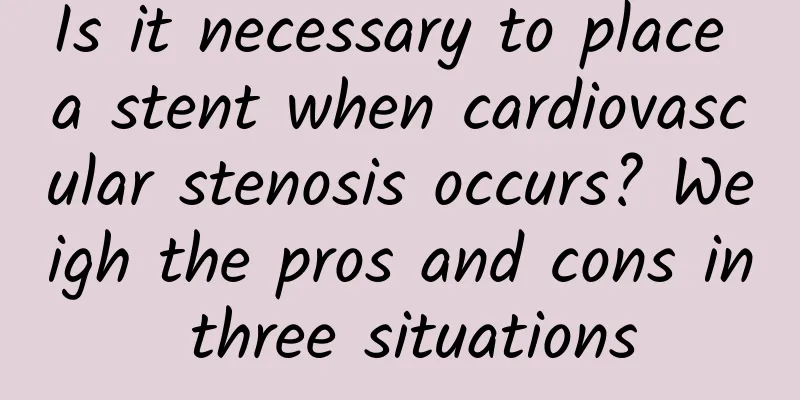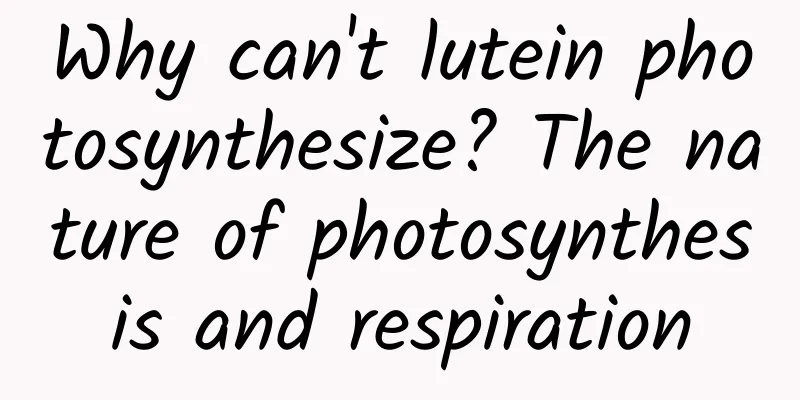Is it necessary to place a stent when cardiovascular stenosis occurs? Weigh the pros and cons in three situations

|
If there is cardiovascular stenosis, is it necessary to place a stent? Dr. Zhang has encountered many patients who have two "completely different" ideas: some patients want to put in stents as soon as plaques appear in their blood vessels, saying that they want to prevent the stenosis from worsening in advance; some patients do not want to put in stents even though their blood vessels are almost blocked, for fear that they will become "useless" after the stent is put in! Whether to place a stent or not, the doctor needs to weigh the risks and benefits of stent implantation before making a decision. There are three different situations: 1. The benefits outweigh the risks When the blood vessel stenosis exceeds 75%-80%, the myocardial blood supply is severely obstructed, and the patient will experience angina symptoms such as chest pain and chest tightness. At this time, the diseased plaque is in an unstable state, platelets will continue to gather around it, and the stenosis will accelerate until it causes acute myocardial infarction. At this stage, drug therapy alone cannot effectively control the condition . According to statistics, the mortality rate of conservative drug treatment for acute myocardial infarction is as high as 40%. Only interventional treatments such as stents can effectively improve vascular stenosis and reduce the mortality rate to 3%-5%. At this time, for patients who have no contraindications to surgery, the benefits of stent implantation far outweigh the risks. 2. Risks outweigh benefits When the stenosis is less than 75%, due to the compensatory effect of the cardiovascular system, myocardial blood supply is not affected and angina pectoris symptoms generally do not occur. At this time, simple drug treatment can inhibit the progression of the disease. Implanting a stent in advance at this stage will not bring additional myocardial blood supply or relieve symptoms to the patient. On the contrary, after the stent is implanted, high-intensity antiplatelet drugs need to be taken, which greatly increases the risk of bleeding in the digestive tract and cerebral blood vessels. More importantly, vascular endothelial cells will continue to grow inside the stent and atherosclerosis will occur again, forming new stenosis, which cannot achieve the purpose of "preventing stenosis" at all. 3. Risks and benefits are equal Some patients have diffuse vascular lesions, such as left main trunk + three-vessel lesions. Not only is the stent surgery complicated, but the number of stents implanted is also large, and even 7 or 8 stents cannot effectively resolve the lesions. This type of stent surgery not only has a high probability of restenosis in the future, but also has complications such as thrombosis, vascular dissection, and even sudden death during the operation. Therefore, although stents can be implanted technically for this type of lesion, the risks and benefits are highly variable , and doctors will also advise patients to consider the possibility of surgical bypass. I am Dr. Zhang from the Department of Cardiology. If you like my popular science articles, please like them! You can also share them with friends in need! Follow me to see more health knowledge about heart disease! |
<<: Discussion on the prevention and treatment strategies of osteoarthritis in the elderly
>>: What will happen if infants and young children do not supplement with adequate vitamin AD?
Recommend
Fetal heart rate in late pregnancy: 120
In the later stages of pregnancy, you need to che...
Children are nearsighted, don't have these misunderstandings
In fact, many people have some misunderstandings ...
How to prevent premenstrual acne
During menstruation, due to changes in the female...
Don’t wait until your teeth rot before you regret it! How to protect your teeth? Experts suggest...
It's the start of another school year. For ma...
How long after cesarean section can I eat
Since the cesarean section process will also have...
Want to delay menstruation by traveling?
The female menstrual cycle is generally 28 to 32 ...
Causes of blood in leucorrhea
I believe all female friends know about leucorrhe...
Fun fact: Why does hair split?
Having beautiful hair is the dream of many girls,...
Are your eyes red and itchy during the peak season of spring pollen? Beware of allergic conjunctivitis!
Do your eyes turn red and tear up when the spring...
Is the leucorrhea like snot and yellow? These diseases need to be guarded against
Because a woman's vagina is not completely cl...
What are the chances of getting pregnant with an IUD?
Wearing an IUD is what we often call a contracept...
Can hyperthyroidism be cured? What are the symptoms of hyperthyroidism?
Hyperthyroidism is an endocrine disease. People w...
How to do uterine cleaning? Women should keep these methods in mind!
Human life activities will produce a lot of garba...
Ovulation day 8 pregnancy symptoms
Having sex during the ovulation period will incre...









